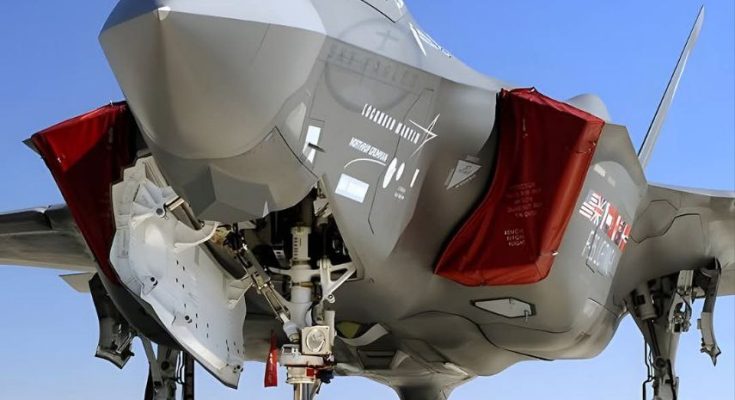The F-35A Lightning II (2025) is set to be the pinnacle of modern air combat, bringing together cutting-edge stealth technology, multirole capabilities, and advanced avionics to create one of the most powerful and versatile fighter jets ever built. As part of the F-35 family, developed by Lockheed Martin, the F-35A is specifically designed for air superiority, precision strike, and close air support, all while maintaining a stealth profile that makes it nearly invisible to enemy radar. The 2025 version of this remarkable aircraft will push the limits of what a fighter jet can do, ensuring the U.S. and allied nations maintain an edge in modern warfare.
Design and Stealth Superiority
The F-35A’s design has been optimized for stealth and aerodynamic performance. Its shape incorporates advanced radar-absorbing materials and a smooth, angular surface, which minimizes its radar cross-section, making it difficult for enemy radar systems to track. This low observability is crucial in modern warfare, where the ability to operate undetected in contested airspace is vital. The F-35A employs a combination of internal weapons bays and sensor fusion technology to maintain its stealth profile while still being able to carry a significant payload of precision-guided munitions.
In addition to radar stealth, the F-35A has a highly advanced infrared signature reduction system that ensures it is difficult to detect by heat-seeking missiles or other thermal sensors. This next-generation stealth technology, which includes both passive and active countermeasures, makes the F-35A one of the hardest targets to hit in combat.
Advanced Avionics and Sensor Fusion
The F-35A’s avionics are at the forefront of military aviation. The 2025 version will feature sensor fusion, which integrates data from multiple sensors, such as radar, infrared targeting systems, and electronic warfare (EW) systems, into a single, seamless picture. This real-time situational awareness provides the pilot with unparalleled information, allowing them to make fast and accurate decisions even in the most complex combat environments.
The AN/APG-81 AESA radar system is one of the F-35A’s key features, offering both air-to-air and air-to-ground capabilities. With active electronically scanned array (AESA) radar, the F-35A can detect and track targets at extended ranges while maintaining a low probability of detection. In addition to radar, the Distributed Aperture System (DAS) offers a 360-degree view of the battlefield, including the ability to detect incoming threats such as missiles or enemy aircraft from all directions.
The F-35A also includes a highly advanced cockpit with a glass touchscreen interface, giving the pilot easy access to all critical systems. The pilot’s helmet-mounted display system (HMDS) provides a heads-up display that overlays targeting and flight data directly onto the pilot’s visor, ensuring they are always aware of their surroundings without needing to look down at the instrument panel.
Multirole Capabilities and Weaponry
One of the key reasons the F-35A is regarded as the most powerful fighter jet on Earth is its multirole capabilities. While many aircraft are specialized for a specific type of mission, the F-35A excels in virtually every domain of air combat. It can engage enemy aircraft in air superiority missions, conduct precision strike missions on ground targets, perform electronic warfare (EW), and even provide close air support (CAS) to ground forces.
The F-35A’s ability to carry a wide variety of munitions—ranging from air-to-air missiles to air-to-ground bombs—further enhances its versatility. Its internal weapons bays allow it to carry weapons while maintaining a stealth profile, and it is also capable of carrying external munitions for non-stealth missions. The aircraft can be armed with precision-guided bombs like the GBU-39 Small Diameter Bomb (SDB), or air-to-air missiles such as the AIM-120 AMRAAM for dogfights.
Furthermore, the 2025 F-35A will be integrated with future weapons systems, including the potential for hypersonic missiles. This will allow it to strike targets with extreme speed and precision from great distances, further enhancing its lethality and survivability.
Strategic Impact and Global Reach
The F-35A’s global reach is another critical aspect of its power. It is being adopted by numerous NATO and allied nations, ensuring that the aircraft plays a significant role in global power projection. Its interoperability with other NATO aircraft and forces allows it to operate as part of a highly integrated coalition in joint and combined operations, giving it unmatched flexibility in theater.
In addition to its combat capabilities, the F-35A has been designed to operate from diverse environments. Whether taking off from aircraft carriers, short runways, or remote bases, the F-35A can be deployed in virtually any scenario, making it one of the most versatile and reliable assets in any modern air force.
Conclusion
The 2025 F-35A Lightning II stands as the most powerful fighter jet on Earth due to its stealth technology, multirole versatility, advanced avionics, and game-changing performance. With the ability to dominate in air superiority, precision strikes, and close air support, it is poised to maintain its position as the backbone of modern air forces for decades to come. As technological advances continue to enhance its capabilities, the F-35A will remain a cornerstone of military aviation, ensuring global air dominance and keeping adversaries at bay.



